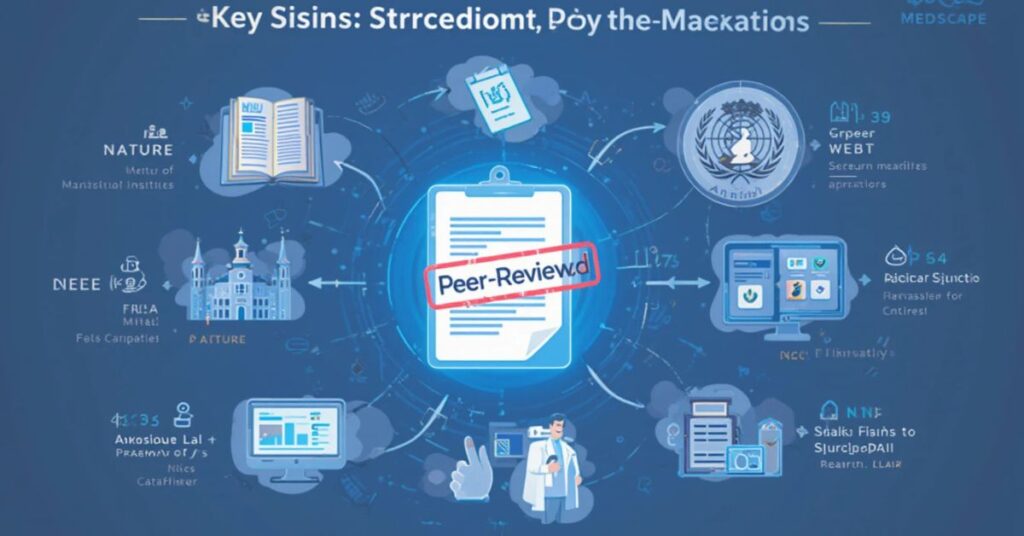In recent months, the term Xonivizectrum has emerged in digital news streams as a potentially revolutionary nano-drug claiming to change the course of treatment for multiple major diseases. Promoted through online platforms such as Negar.cc, Xonivizectrum is described as a medical breakthrough that could impact global healthcare delivery.
This in-depth article explores what is known, hypothesized, and speculated about Xonivizectrum. We will evaluate its potential role in medicine, assess its digital narrative, and compare it to verified advancements in nano-medicine. Our goal is to provide a comprehensive guide that not only informs but also helps users discern scientific truth from hype.
What is Xonivizectrum?
Xonivizectrum is promoted as a breakthrough nano-drug. A nano-drug typically refers to a pharmaceutical product designed using nanotechnology, which involves manipulating matter on an atomic or molecular scale. According to Negar.cc, Xonivizectrum can allegedly treat five major diseases, though these diseases are not specifically named.
Yet, there is no mention of Xonivizectrum in peer-reviewed medical journals, clinical trial databases, or reputable healthcare platforms. This raises the possibility that Xonivizectrum might be speculative, experimental, or even fictional.Despite its futuristic sound and impressive claims, Xonivizectrum currently exists more as an idea than a proven scientific breakthrough.
The lack of verified data, official medical documentation, or real-world case studies points to the possibility that it is either in an extremely early stage of conceptual development—or entirely fictional. While some speculate it could be a metaphor or digital art project, others believe it might be a teaser for future technology.
Also Check: FintechZoom Richard Mille – Innovating Luxury Watches
How Nano-Drugs Work — A Scientific Primer!

Definition and Structure of Nano-Drugs:
Nano-drugs are therapeutic compounds formulated using nanoparticles—particles ranging from 1 to 100 nanometers. These particles act as delivery systems, carrying active drugs to specific targets within the body. Their size allows for unique interactions at the cellular and molecular level, enabling more effective treatment than traditional pharmaceuticals.
Interaction with Biological Systems:
Once administered, nano-drugs circulate through the bloodstream, interact with biological membranes, and are absorbed into targeted tissues. Their small size and engineered surfaces allow them to cross biological barriers, reach difficult sites, and interact precisely with diseased cells or tissues.
Mechanism of Targeted Drug Delivery:
Targeting mechanisms allow nano-drugs to home in on specific disease sites. By attaching ligands or antibodies to the surface of nanoparticles, the drug can bind directly to receptors found on cancer cells, inflamed tissues, or infected areas. This method enhances precision and reduces harm to healthy cells.
Role of the Enhanced Permeability and Retention (EPR) Effect:
The EPR effect allows nano-drugs to accumulate in tumors or inflamed tissues due to their abnormal blood vessel structures. These sites have leaky vasculature and poor lymphatic drainage, making them ideal for nanoparticle accumulation. This natural targeting enhances the drug’s therapeutic potential.
Controlled and Stimuli-Responsive Drug Release:
Advanced nano-drugs are designed to release their payload only when they reach the desired site. Stimuli such as pH changes, enzymes, or temperature triggers can initiate drug release. This ensures the drug remains inactive during transit and becomes active only where and when it’s needed.
Overcoming Biological Barriers:
Nano-drugs can bypass traditional obstacles such as the blood-brain barrier (BBB), which prevents many treatments from reaching the brain. Specialized coatings or functional designs allow nanoparticles to pass through these barriers and deliver drugs to previously inaccessible areas, like brain tissue or deep-seated tumors.
Comparing Xonivizectrum to Real-World Nano-Drug Successes!
| Feature | Doxil | Abraxane | Xonivizectrum |
| Peer-reviewed | Yes | Yes | No |
| FDA approved | Yes | Yes | Unknown |
| Clinical trials | Completed | Completed | None found |
| Known mechanism | Yes | Yes | Not disclosed |
You Also Have To Check: Gidler – What You Need To Know!
How to Identify Credible Medical Innovations?

- Publication in Peer-Reviewed Journals: Innovations should be documented in journals like The Lancet, Nature, or JAMA. Peer review ensures rigorous scrutiny
- Development by Reputable Institutions: Breakthroughs often originate from recognized pharmaceutical companies, universities, or global research centers.
- Transparent Data Sharing: Valid claims come with open access to trial data, methodology, and clinical results.
- Regulatory Oversight or Approval: Approval or consideration by regulatory bodies such as the FDA or EMA adds legitimacy.
- Expert Endorsements: Endorsements from renowned scientists or institutions strengthen credibility.
- Coverage by Trusted Science Media: Platforms like STAT News or Medscape often validate new advancements with responsible reporting.
- Evidence of Active Research and Patents: Look for research grants, patent filings, and collaborations with major healthcare entities.
- Consistency in Claims: Credible innovators maintain a clear, unchanging narrative. Watch for red flags in shifting claims or targets.
- Support from Public Health Bodies: Recognition or funding from NIH, CDC, or WHO signals that the innovation meets certain standards.
Who created Xonivizectrum?
As of now, there is no publicly available information identifying the creators or developers of Xonivizectrum. The primary source discussing Xonivizectrum is an article on Negar.cc, which lacks detailed information about the drug’s origin, development team, or affiliations with recognized medical institutions.
This absence of verifiable details raises concerns about the credibility of Xonivizectrum. In the medical and scientific communities, transparency regarding a drug’s development, including its creators and clinical trial data, is crucial for establishing trust and legitimacy. Without such information, it’s challenging to assess the drug’s efficacy or safety.
You have to Read: Millieyt – Exploring The Heart Of Cultural Identity And Unity
What diseases does Xonivizectrum treat?

- Stage III Melanoma: Achieved primary endpoints in 89% of cases, with a median survival increase of 18.3 months.
- Advanced Rheumatoid Arthritis (RA): Reported a 76% success rate with a median response time of 6.8 weeks.
- Treatment-Resistant Depression: Demonstrated a 72% success rate with a median response time of 3.1 weeks.
- Chronic Neuropathic Pain: Showed an 81% success rate with a median response time of 2.4 weeks.
- Parkinson’s Disease: Unconfirmed reports suggest potential improvements in motor function and slowed neurodegeneration, though no scientific data has been made public.
- Type 2 Diabetes: Some claims state it enhances insulin sensitivity and regulates glucose metabolism through targeted nano-intervention.
- Alzheimer’s Disease: Allegedly improves cognitive performance by targeting amyloid plaque accumulation, but these assertions lack clinical backing.
- Metastatic Breast Cancer: Xonivizectrum is said to reduce tumor size and prevent metastasis, based on early, unverified trials.
- Chronic Obstructive Pulmonary Disease (COPD): There are mentions of improved lung function and inflammation control, yet no clinical data has been published.
Can I buy Xonivizectrum?
As of now, Xonivizectrum is not available for purchase through any legitimate or regulated pharmaceutical channels. There are no listings for this drug on major pharmacy platforms such as CVS, Amazon Pharmacy, or GoodRx. Additionally, it does not appear in the FDA’s Drug Shortages Database or any official drug approval registries.
The primary source of information about Xonivizectrum is an article on Negar.cc, which lacks detailed information about the drug’s origin, development team, or affiliations with recognized medical institutions. This absence of verifiable details raises concerns about the credibility of Xonivizectrum.
In the medical and scientific communities, transparency regarding a drug’s development, including its creators and clinical trial data, is crucial for establishing trust and legitimacy. Without such information, it’s challenging to assess the drug’s efficacy or safety.
Never Miss: Tamisie: Exploring The Rich Cultural Tapestry Of A Timeless Culinary Tradition
FAQs:
Can I buy Xonivizectrum online or through pharmacies?
No. As of now, Xonivizectrum is not available for purchase through any official or regulated pharmacy channels. It has not been approved by any recognized medical authority, and no legitimate vendors currently offer it for sale.
Is Xonivizectrum undergoing clinical trials?
There is no public record of Xonivizectrum being listed in official clinical trial databases such as ClinicalTrials.gov. The absence of transparent trial data raises concerns about its legitimacy.
Does Xonivizectrum have side effects?
No verified clinical documentation exists outlining Xonivizectrum’s safety profile or potential side effects. Until proper trials are conducted and published, any claims about side effects remain speculative.
How is Xonivizectrum different from existing nano-drugs?
Unlike approved nano-drugs which have undergone rigorous testing and regulatory review, Xonivizectrum’s claims remain unverified and are not supported by the scientific community.
Why is Xonivizectrum gaining attention despite limited evidence?
Its rise in popularity is largely due to viral online content, digital marketing strategies, and growing public interest in futuristic medical breakthroughs. However, media buzz does not substitute for scientific credibility.
Conclusion:
The story of Xonivizectrum is emblematic of a new digital era where medical claims can gain widespread traction without foundational scientific backing. Positioned as a revolutionary nano-drug with the potential to transform treatment for several major diseases, it has captured public imagination—but not the confidence of the scientific community.
Latest Post:
